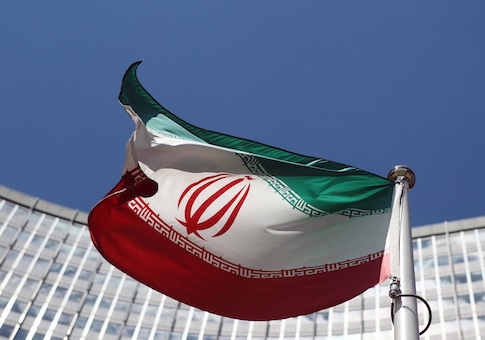VIENNA—Iran will be permitted to operate more than 5,000 nuclear centrifuges under any final deal secured in the coming days, according to Western sources who fear that the Islamic Republic could use such technology to continue building a nuclear weapon.
Sources commenting on the resumed talks indicated on Tuesday that Iran and Western powers have reached a deal that would enable Iran to continue operating more than 5,000 nuclear centrifuges, which are used to enrich uranium to a level needed for a weapon.
As negotiators struggle to work around a new set of Iranian red lines announced last week in a speech by Ayatollah Ali Khamenei, U.S. officials announced Tuesday that the talks would be extended through at least July 7.
Iranian leaders have demanded in recent days that the United States agree to allow the country to maintain its core nuclear structure, including centrifuges and other nuclear research efforts.
Such a large number of centrifuges could enable Tehran to enrich enough uranium for several bombs, experts say. Countries such as Pakistan and North Korea have successfully achieved nuclear weapons status with far fewer centrifuges.
Pakistan, for instance, secured nuclear weapons by running around 3,000 centrifuges, according to analysts.
"Iran is poised to walk away from Vienna with more centrifuges than North Korea has ever been known to possess and a U.S.-endorsed R&D program to improve their efficiency," said Chris Griffin, executive director of the Foreign Policy Initiative. "For talks that began with U.S. officials insisting that Iran dismantle its enrichment capability, that outcome will mark a resounding collapse."
Western sources familiar with the talks expressed concern about the United States enabling Iran’s illicit nuclear activities in a last-minute bid to strike a deal before the deadline.
"It is alarming to see how in dealing with this regime in Tehran, our negotiators have learned so little from past errors, where leaving nuclear infrastructure, like thousands of centrifuges, in the hands of lying, terror-sponsoring, human rights abusing, ballistic missile shooting mad-men resulted in nuclear weapons and proliferation, just as this bad deal will promote," said one source present in Vienna for the talks.
Under the tentative parameters of a final deal, Iran will be allowed to operate more than 5,000 centrifuges.
Michael Morell, a former CIA deputy director, explained in February that such a large number of centrifuges could be used to build a nuclear weapon.
"If you are going to have a nuclear weapons program, 5,000 is pretty much the number you need," Morell, said. "If you have a power program, you need a lot more. By limiting them to a small number of centrifuges, we are limiting them to the number you need for a weapon."
Another Western source present for the talks said that "this deal gives the Iranians more than enough centrifuges to go nuclear whenever they decide to, and hopes that they don’t."
In addition to the centrifuge debate, Iran has insisted it not be subject to international inspections. Tehran also is insisting it not be required to disclose the past military dimensions of its nuclear program.
Marie Harf, a State Department official, told reporters Tuesday that the talks would be extended past their original June 30 deadline in a bid to secure a final agreement.
"The P5+1 and Iran have decided to extend the measures under the Joint Plan of Action until July 7 to allow more time for negotiations to reach a long-term solution—a Joint Comprehensive Plan of Action—on the Iran nuclear issue," said Harf in a statement to reporters.
